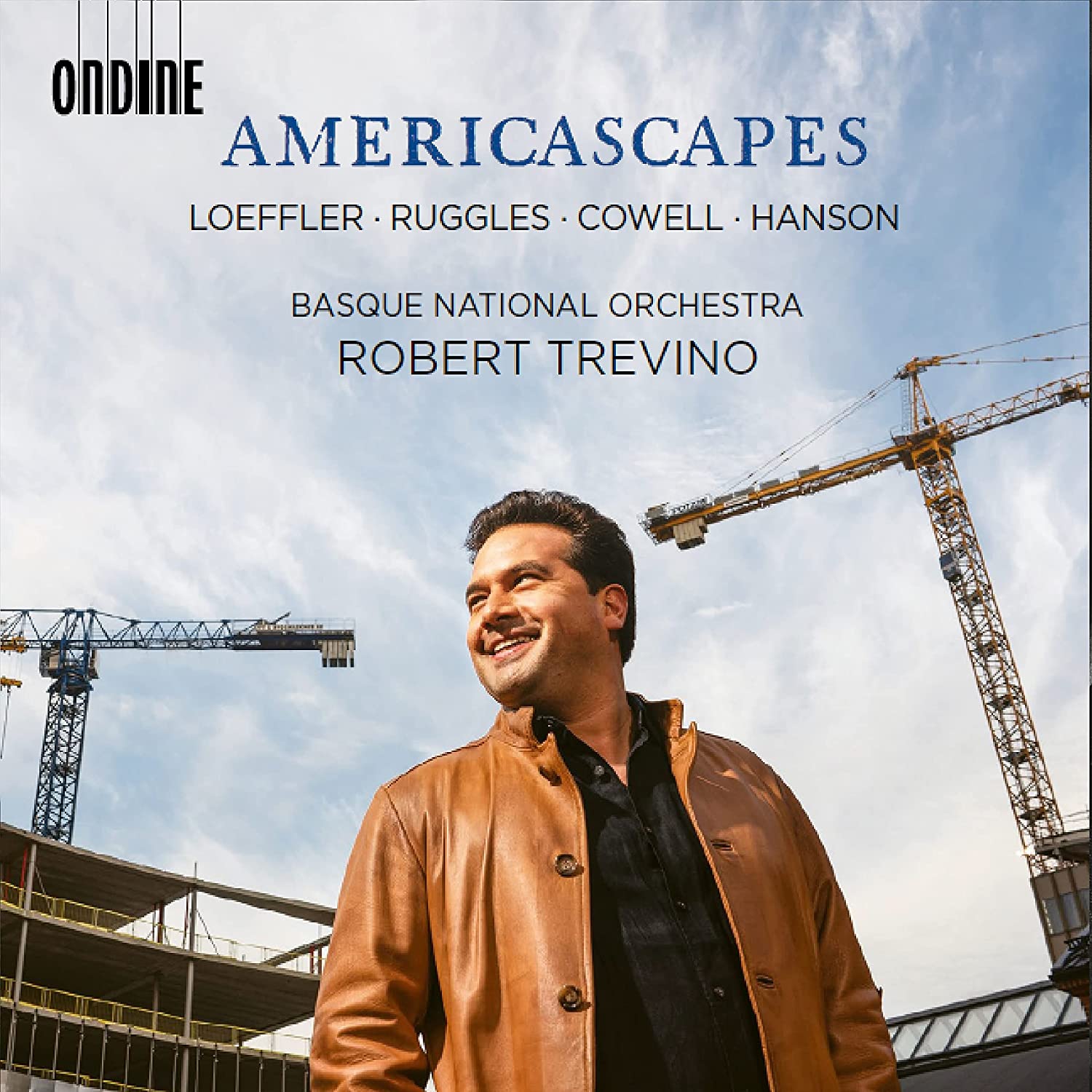 Americascapes – music by Loeffler, Ruggles, Hanson and Cowell Basque National Orchestra/Robert Trevino (Ondine)
Americascapes – music by Loeffler, Ruggles, Hanson and Cowell Basque National Orchestra/Robert Trevino (Ondine)
This is great: a compilation of lesser-known American orchestral music played with panache by a Spanish orchestra teamed with an American conductor. Charles Loeffler was born in Berlin in 1861 and joined the Boston Symphony as a violinist in 1882. His A Pagan Poem was a repertoire work in the early 20th century; Stokowski’s recording is still available. La Mort de Tintagiles is worth hearing, an extravagant 1897 tone poem based on a dark Maeterlinck play. What’s being described isn’t made clear in Ondine’s sleeve notes, but there’s much to admire. There’s some superb writing for solo viola d’amore, and a wonderfully sombre close. More, please. Similarly accessible if less memorable is Howard Hanson’s Before the Dawn, seven minutes of amiable fluff which fades away before it can leave much of an impression. Hanson’s big-hearted Symphony No. 2 is a better starting point.
There aren’t many starting points if you’re curious about Carl Ruggles, a cantankerous maverick modernist who left barely enough music to fill a pair of CDs. His Evocations began life as a piano piece and was orchestrated in 1943. Again, I’ve no idea what’s being evoked in its four short movements, but Ruggles’s bold, freely dissonant language is distinctive and striking. It’ll hopefully prompt the curious to seek out the composer’s Sun Treader, fifteen minutes of pounding timpani and angular brass, and a 20th century masterpiece. All good, and the best thing on the disc comes last: 20 minute sequence of Variations by Henry Cowell, probably the only composer of note who spent time locked up in San Quentin Prison. Brilliantly orchestrated, it’s a blast. There’s a terrific extended variation for percussion halfway through, and the coda’s unexpected resolution onto a beefy major chord is effective. Robert Trevino’s brave Basque National Orchestra play with a swagger and confidence that’s winning, and Ondine’s engineering is impressive. A must-hear.
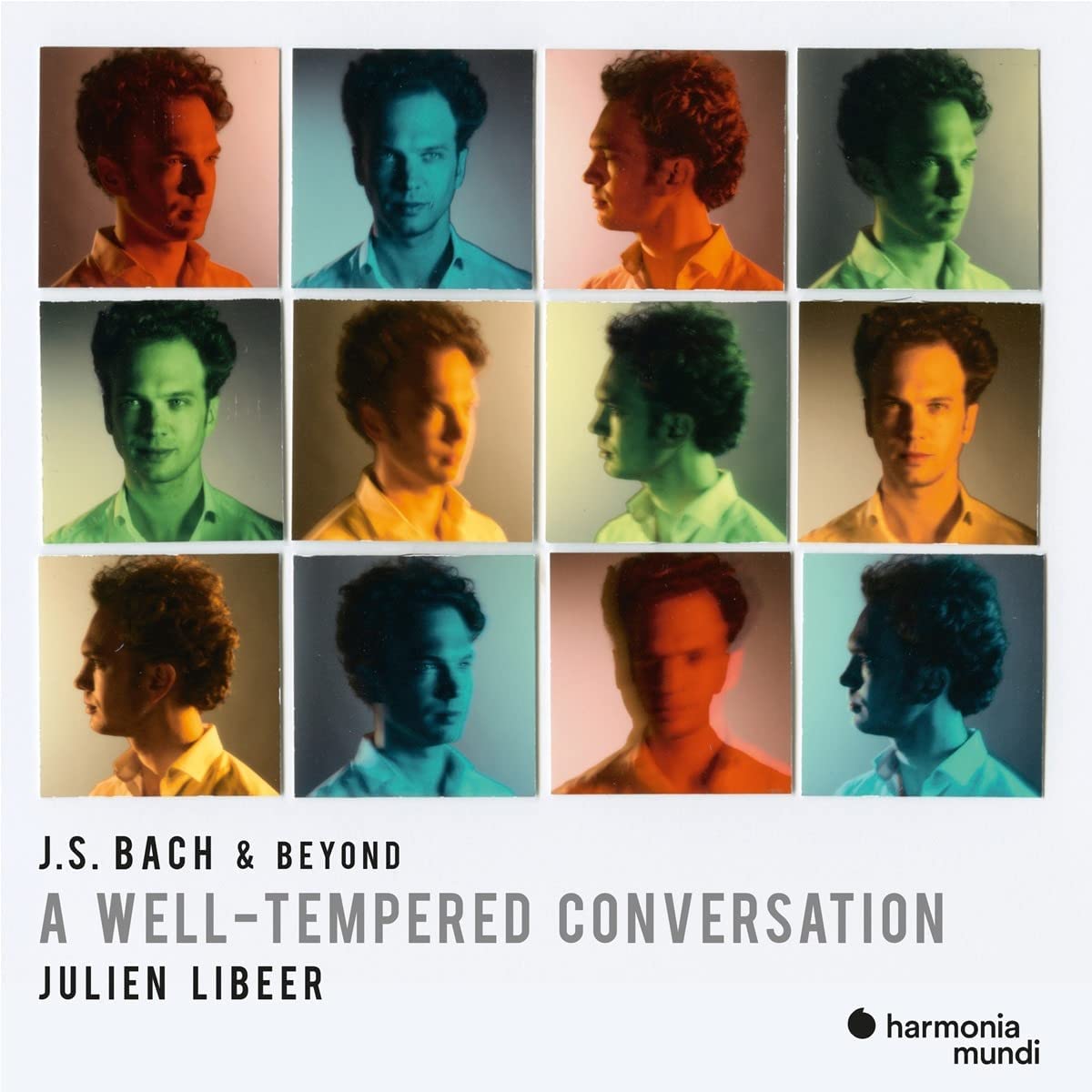 Julien Libeer, piano - J.S Bach and Beyond - A Well-Tempered Conversation (Harmonia Mundi)
Julien Libeer, piano - J.S Bach and Beyond - A Well-Tempered Conversation (Harmonia Mundi)
2022 marks the 300th anniversary of the completion of the first book of Bach’s Das Wohltemperirte Clavier. Belgian pianist Julien Libeer (b.1987) has marked the tercentenary in a highly imaginative and creative way in his second release for Harmonia Mundi. Libeer, who was taught and mentored by Maria João Pires at the Chapelle Musicale in Brussels, released a fine debut album in 2016, Lignes Claires, juxtaposing works by Ravel and by Dinu Lipatti. More recently he contrasted Bach and Bartok in his Harmonia Mundi debut, released in early 2020. The new 2-CD set takes that process of seeking out comparisons and contrasts, the making-sense of juxtapositions much further. Here he plays all of the major-key preludes and Fugues by Bach, and intersperses them in every case with a piece in the relative minor by another composer. “The aim”, he says, “was to imagine a dialogue between Bach and the later composers who were inspired by him […] and whose chosen works draw on some of the ideas, concepts, techniques or ambitions that underlie the cycle”. This approach takes the pianist and the listener on a dozen different excursions away from Bach….and then brings us back to him. It is a lovely idea. The closing gesture is neat too: he brings us home and to safety with a reprise of the C major Prelude.
The recording has two “best-of-Belgium” aspects: it has been beautifully recorded at Flagey Studios in Brussels on a fine, straight-strung Chris Maene Steinway. There is a thoughtful interview in the booklet, eight pages long in each of three languages. Since the majority of what we hear is by Bach, it is worth pointing out that Libeer’s Bach playing has wonderful verve, fluency and conviction. There is a delectable lightness about it too – try the C sharp major Prelude. And then there are the excursions away from Bach. Libeer takes us on some very thoughtful voyages of discovery. I found myself checking back to know where he had taken me. Thus on the first disc we visit Fauré (impossible to guess that one, I'll admit!)… and Chopin and Ravel. The half-way point and the end of the first disc gives a special moment and a much longer excursion of nearly ten minutes: the Mozart Fantasy in F minor for Mechanical Organ K.608, arranged for piano four hands by Busoni, with Libeer’s direct contemporary the French pianist Adam Laloun as second pianist. The substantial piece is given a spacious and powerful reading. Libeer casts his net wider and more provocatively on the second disc, taking in Ligeti and Schoenberg, underlining that this is a completely personal selection in which Libeer is free to make his own rules. Perhaps it is the mark of all good ideas that they can and inevitably will be copied; I hope this one will. In the meanwhile, Julien Libeer has set a very high bar for comparison with this thoughtful selection, with his fine playing of it, and with the superb-as-ever Flagey sound.
Sebastian Scotney
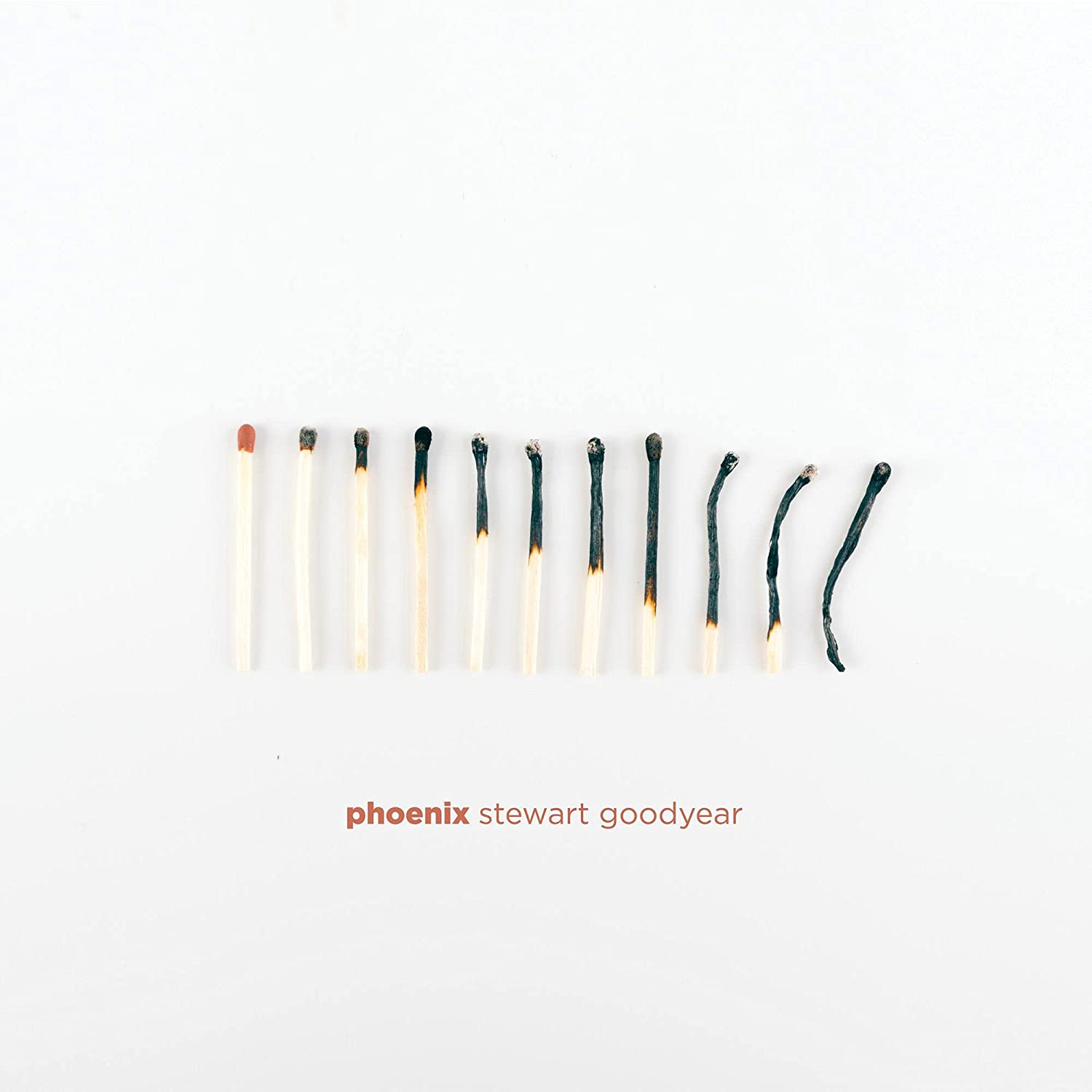 Stewart Goodyear: Phoenix (Bright Shiny Things)
Stewart Goodyear: Phoenix (Bright Shiny Things)
Two showpieces by pianist Stewart Goodyear bookend this engaging disc. “Congolay” makes reference to Goodyear’s Trinidadian heritage, and “Panorama” is five minutes of propulsive, percussive rumba. The big work is Mussorgsky’s Pictures at an Exhibition. I’ve heard too many flabby performances of Ravel’s orchestrated version lately, so coming back to the original score was a revelation. Goodyear’s crisply articulated performance is so full of life, so rhythmically buoyant, and the starker colours better allow one to appreciate how individual the piano writing is. “The Gnome” is all sharp edges and disquieting harmonies. “Bydlo” rumbles past with terrifying weight, and the unhatched chicks are featherlight. The last three movements make for a thrilling conclusion; “Baba Yaga” is unsettling, and the finale is exultant without sounding bombastic.
Anthony Davis’s Middle Passage is a stormy depiction of slaves being transported across the Atlantic, the soloist directed to improvise at several points. Secret and Glass Gardens by Jennifer Higdon gleams, its clangourous climax neatly followed up by a glowing account of Debussy’s “La cathedrale engloutie”, the pealing bells thundering out. Goodyear’s warmth and enthusiasm go hand-in-hand with impeccable technique, and the recorded sound is sumptuous. No notes, but the sleeve design and packaging are striking.
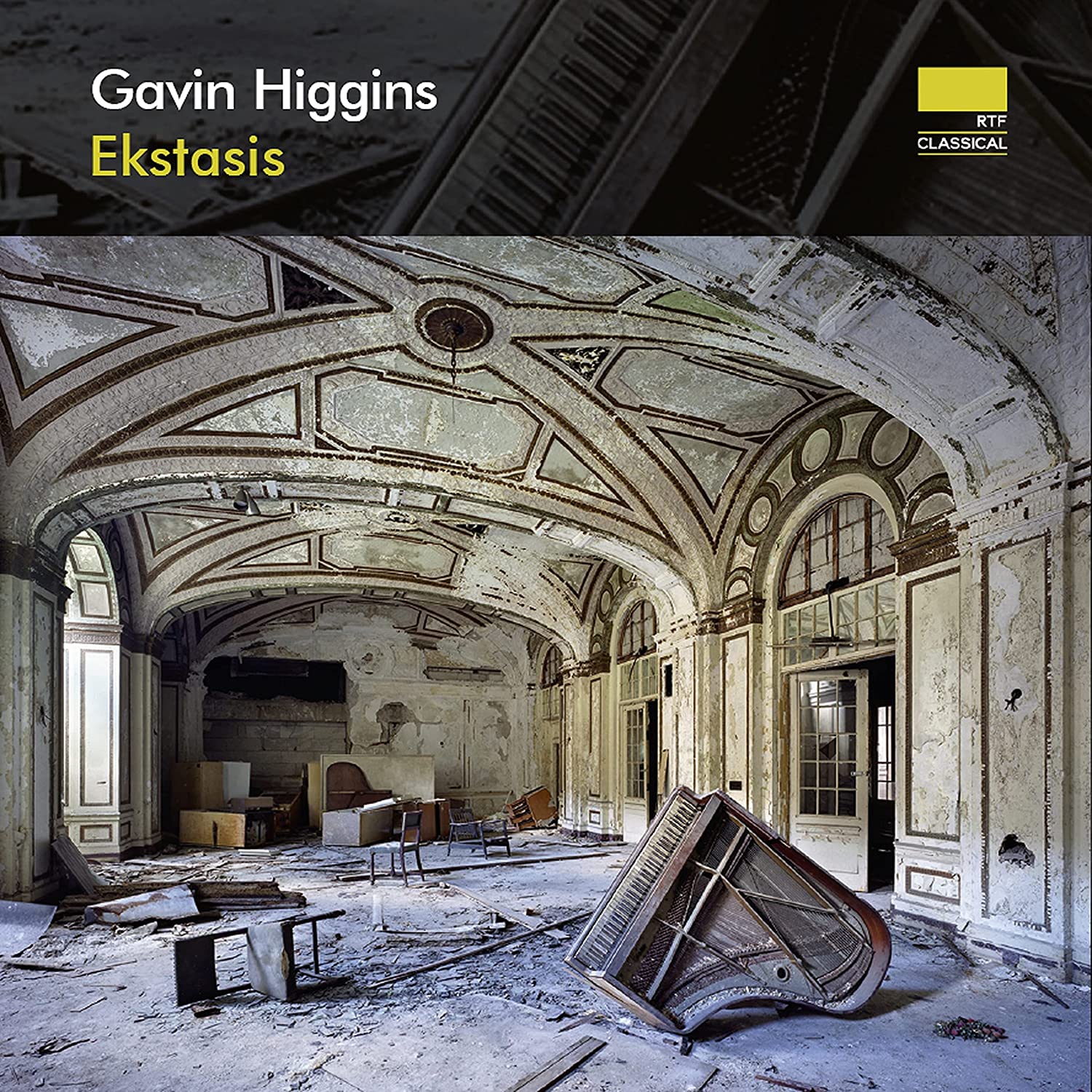 Gavin Higgins: Ekstasis (RTF Classical)
Gavin Higgins: Ekstasis (RTF Classical)
Gavin Higgins’s 2016 album Dark Arteries is a modern classic, so I was curious to hear this chamber music follow up. Fans of Higgins’ brass writing should dive in without fear; the four works assembled here are engaging and fluently scored. The title track, Ekstasis, is a five-part exploration of the search for ecstasy and loss of control, attained variously via meditation, religion and hedonism. Idiomatically scored for string sextet, Higgins’s music is darker and more brooding than one might expect. The central section, “We turn to the gods and are torn apart”, is a savage, violent dance, followed by a rarified and static “Meditation” and a visceral depiction of Saint Teresa. The string writing is idiomatic, the sparer textures sharp and clear. The Ruins of Detroit is a three-movement piano trio taking inspiration from a set of photographs chronicling the city’s decline. “Car, Michigan Theatre” is full of irregular, overlapping motor rhythms, surrounded by a pair of movements dominated by a spectral slow waltz.
Violinist Thomas Gould is compelling in Seven Welsh Folk Songs, Higgins adding the very occasional astringent touch to his source material. The longest work is the string quintet Gursky Landscapes. Inspired by more images, in this case photographs of interiors and landscapes by the German photographer Andreas Gursky. Dizzying volleys of pizzicato notes suggest the movement of subatomic particles in the third section, and “Kathedrale” is all hushed transcendence. Performances, from the Piatti Quartet, Fidelio Trio and Gould, are excellent, the sense of excitement presumably stemming from the circumstances surrounding the recording sessions in November 2020, where musicians and production team were holed up in an empty remote hotel for four foggy days, surviving on delivered food and several cases of wine. Higgins’s notes are interesting, and production values are high.
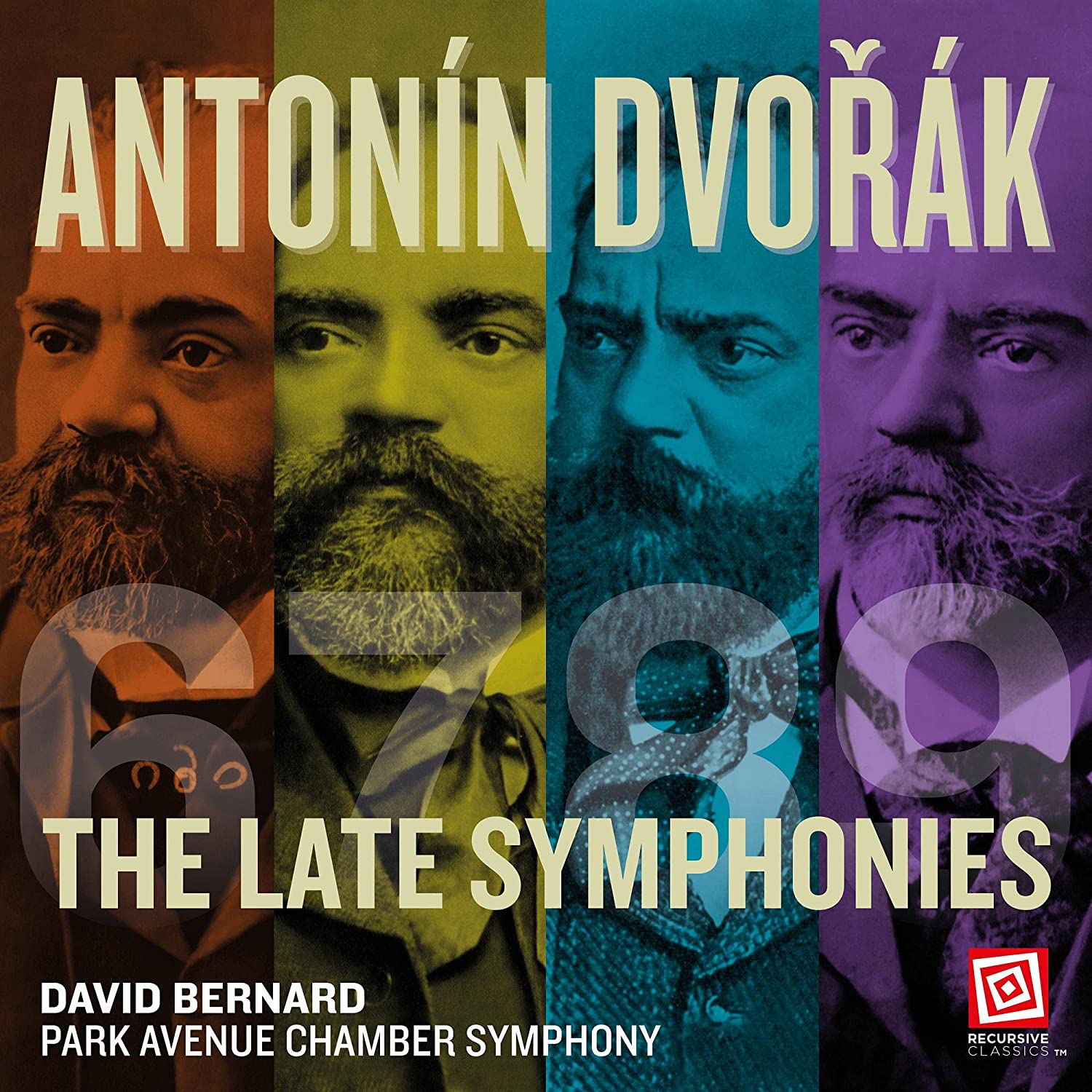 Dvořák: The Late Symphonies Park Avenue Chamber Symphopony/David Bernard (Recursive Classics)
Dvořák: The Late Symphonies Park Avenue Chamber Symphopony/David Bernard (Recursive Classics)
'Late' Dvořák is usually taken to include just the last three symphonies, so it's refreshing that this two-disc set includes the under-performed No.6, the first to have been published in the composer's lifetime. The allusions to Brahms come thick and fast. Particularly the older composer's Symphony No. 2, also in D major, with an expansive 3/4 opening movement and some prominent writing for winds and horns. More refulgent and better-upholstered recorded performances than this one from David Bernard's Park Avenue Chamber Symphony are readily available (try Kubelik and Kertész), but Bernard's affectionate, clear-sighted account quickly won me over. Dvořák's busy contrapuntal writing never sounds clogged, and the recording is better balanced and less revberberant than previous discs from this source. The playing is also more assured. No. 8 is similarly effective. The mood swings are nicely judged, particularly the first movement's stormy development section. The symphony's closing minutes had me cheering, with extrovert brass and an exciting dash to the finish.
Symphonies 7 and 9 have their moments too. The coda of No. 7's first movement is suitably dark, and the scherzo's cross-rhythms have plenty of bounce. Bernard also follows Szell in having the horns double a crucial wind line in the symphony's final bars. Inauthentic, maybe, but the passage sounds fabulous here, the D major resolution all the more satisfying for it. No.9's Allegro molto has plenty of energy, and there's a melting cor anglais solo in the Largo. The recorded balance sounds more distant, though, and some crucial wind details don't always emerge clearly. Still, an appealing, economically priced set, and worth acquiring for Symphonies 6 and 8.

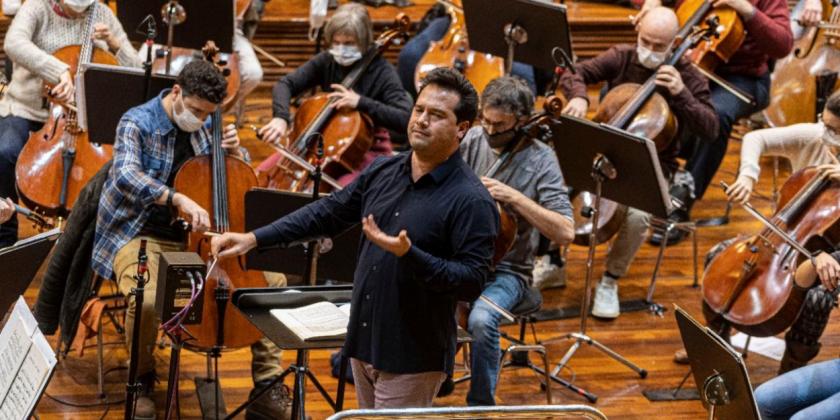













Add comment